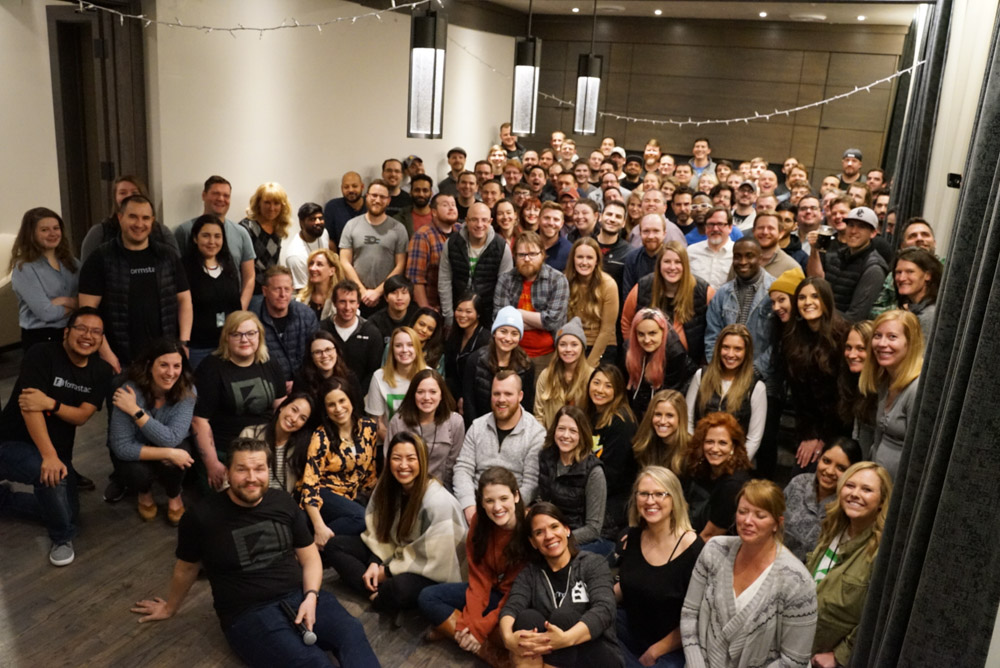Now in its 36th year, ColoradoBiz magazine’s Top Company Awards program recognizes businesses and organizations based in Colorado or with a significant presence in the state that are leading the way in their fields, as demonstrated by financial performance, notable company achievements and community engagement.
To be considered, Top Company entrants submitted applications throughout the year online at ColoradoBiz.com. From those entries, which numbered in the hundreds, the magazine’s editorial board narrowed the field to three finalists (in most cases) in each industry category. A judging panel made up of area business leaders and ColoradoBiz staff then met to compare notes on the finalists and decide winners in 14 industries plus the Startup category, for companies in business four years or less.
Congratulations are in order not only to the 41 winners and finalists profiled on the following pages, but to all the companies that took the time to tell us about their achievements and obstacles surmounted over the past year that make them worthy of Top Company consideration.
READ: Fall 2023 Issue — Top Company Awards, Inside the CHIPS and SCIENCE Act, and More
WINNER
Trimble
Westminster, CO
Website: trimble.com
Trimble was founded in 1978 and is recognized as the first company to commercialize GPS. It has since expanded its technology portfolio to include hardware, software and services that increase productivity, improve efficiencies and drive sustainability. Today, it is most known for connecting the physical and digital worlds, helping make everything from a building to an agriculture yield more efficient and productive.
Trimble’s revenue has grown steadily despite a rocky business environment that’s been plagued by supply chain issues, materials shortages, cost pressures and global economic and political uncertainty. The company has more than 13,200 employees – an increase of 14 percent over the past five years; they are located across approximately 40 countries and speak 45 different languages. While Trimble established its presence in Colorado in 2000, it just moved its corporate headquarters to Westminster last fall.
Trimble’s solutions are used in more than 150 countries by millions of customers – numbers that continue to grow as the company innovates and evolves to better meet its users’ needs. From precision guidance technology on a tractor, to construction management software, to enterprise life-cycle solutions, Trimble technology is helping to digitally transform industries that have historically been technology laggards, enabling them to become more efficient, productive and sustainable. This is particularly important given that construction is responsible for almost 40 percent of global CO2 emissions from fuel combustion, and for 25 percent of overall greenhouse gas emissions.
Trimble holds more than 1,000 unique, active patents and spends roughly 13-15 percent of its sales revenue on R&D. In 2022 alone, Trimble spent more than $540 million on R&D.
The company’s quarterly Technical Innovation Award provides formal recognition and a financial reward for innovative work. Any team or individual below the level of Engineering Director is eligible; in 2022, four teams were selected, each receiving a $10,000 prize.
FINALISTS
Fluid Truck
Denver, CO
Website: fluidtruck.com
Launched in 2016, Fluid Truck helps businesses and individuals rent commercial vehicles at the tap of a button. The company offers trucks, vans, electric vehicles and more through its mobile app and website 24/7, 365 days a year.
Fluid Truck is used nationally by businesses of all sizes to flexibly and affordably build their fleet, manage employee scheduling on-the-go, and activate zero-emission last-mile delivery services, free from the hassles of ownership. Fluid Truck serves more than 100,000 users, supporting customers ranging from local florists and moving companies to national retailers such as IKEA and delivery fleets for Amazon, FedEx and UPS. It operates in 400 cities across the U.S.
Fluid Truck is the ninth-fastest growing company in North America, according to Deloitte.
The company regularly partners with local nonprofits and community outreach programs in every city on the Fluid Truck platform to provide free rental credits to help organizations empower communities. For example, the North Carolina Adult Soccer Association raised thousands of dollars in Charlotte to provide free mammograms to the women of North Carolina. Fluid Truck donated a truck to help the association accomplish its cause. Locally, Fluid Truck donated a truck to Hope Lives Here Colorado so the nonprofit could haul supplies to families’ homes. The nonprofit builds bedrooms for children who lost their homes in the Marshall Fire.
Optiv
Denver, CO
Website: optiv.com
Optiv delivers cyber advisory and cyber solutions to nearly 6,000 companies across every major industry. The Denver-based company partners with organizations to advise, deploy and operate complete cybersecurity programs from strategy and managed security services to risk, integration and technology solutions.
Optiv points out that as the world has digitized, the surface area for potential cyberattacks has grown.
Realizing Optiv had a unique opportunity to carve out a differentiated position in the crowded cybersecurity market, Optiv CEO Kevin Lynch in 2021 led Optiv in creating a new market “category of one.”
For Optiv, that has meant shifting brand perception from a technology reseller and security solutions integrator to that of cyber advisory and solutions leader and one of the largest pure-play cybersecurity companies in the world.
A specific internal challenge Optiv has worked through and overcome this year is growth in the federal sector. Acknowledging the public sector’s need for cybersecurity and resilience support, Optiv wanted to expand as a services organization in the federal space and looked for the right strategy to do so. The company’s efforts culminated in its recent acquisition of ClearShark, which more than doubles its federal presence.
Along with its commitment to helping clients manage cyber risk, Optiv is devoted to giving back to the communities where its employees live and work. Since 2018, the company’s Optiv Chips In (OCI) program has supported underserved populations through industry investments, community projects and employee mobilization – harnessing employees’ collective passions to make lasting change.




 Take Sydney, Australia-based Finder, with an app that helps users save and invest. Co-founder Fred Schebesta says Denver beat out Atlanta and other locations for the company’s U.S. headquarters.
Take Sydney, Australia-based Finder, with an app that helps users save and invest. Co-founder Fred Schebesta says Denver beat out Atlanta and other locations for the company’s U.S. headquarters.


 Denver-based Maxwell, a software provider to the mortgage industry, is a prime example. “The mortgage industry has been going backwards over the last 10 years,” says CEO John Paasonen. “Ten years ago, you could get a mortgage in 30 days. Today, the average is 50 days. It now costs more to originate a mortgage than it does to produce a Toyota. It’s expensive, and it’s all paper-driven and people-driven.”
Denver-based Maxwell, a software provider to the mortgage industry, is a prime example. “The mortgage industry has been going backwards over the last 10 years,” says CEO John Paasonen. “Ten years ago, you could get a mortgage in 30 days. Today, the average is 50 days. It now costs more to originate a mortgage than it does to produce a Toyota. It’s expensive, and it’s all paper-driven and people-driven.” A visit during Denver Startup Week helped the founders make the decision to relocate. “Wow, there’s a real tech scene in this Denver place,” says Paasonen, calling Denver’s “phenomenal” airport a big part of the company’s move to Colorado. “With direct flights to most of the country, we can be on a 6:30, 7 a.m. flight, have a full day of meetings, and be back to tuck our kids in at night. That’s meaningful for people. You can’t do that on the coasts.
A visit during Denver Startup Week helped the founders make the decision to relocate. “Wow, there’s a real tech scene in this Denver place,” says Paasonen, calling Denver’s “phenomenal” airport a big part of the company’s move to Colorado. “With direct flights to most of the country, we can be on a 6:30, 7 a.m. flight, have a full day of meetings, and be back to tuck our kids in at night. That’s meaningful for people. You can’t do that on the coasts.

